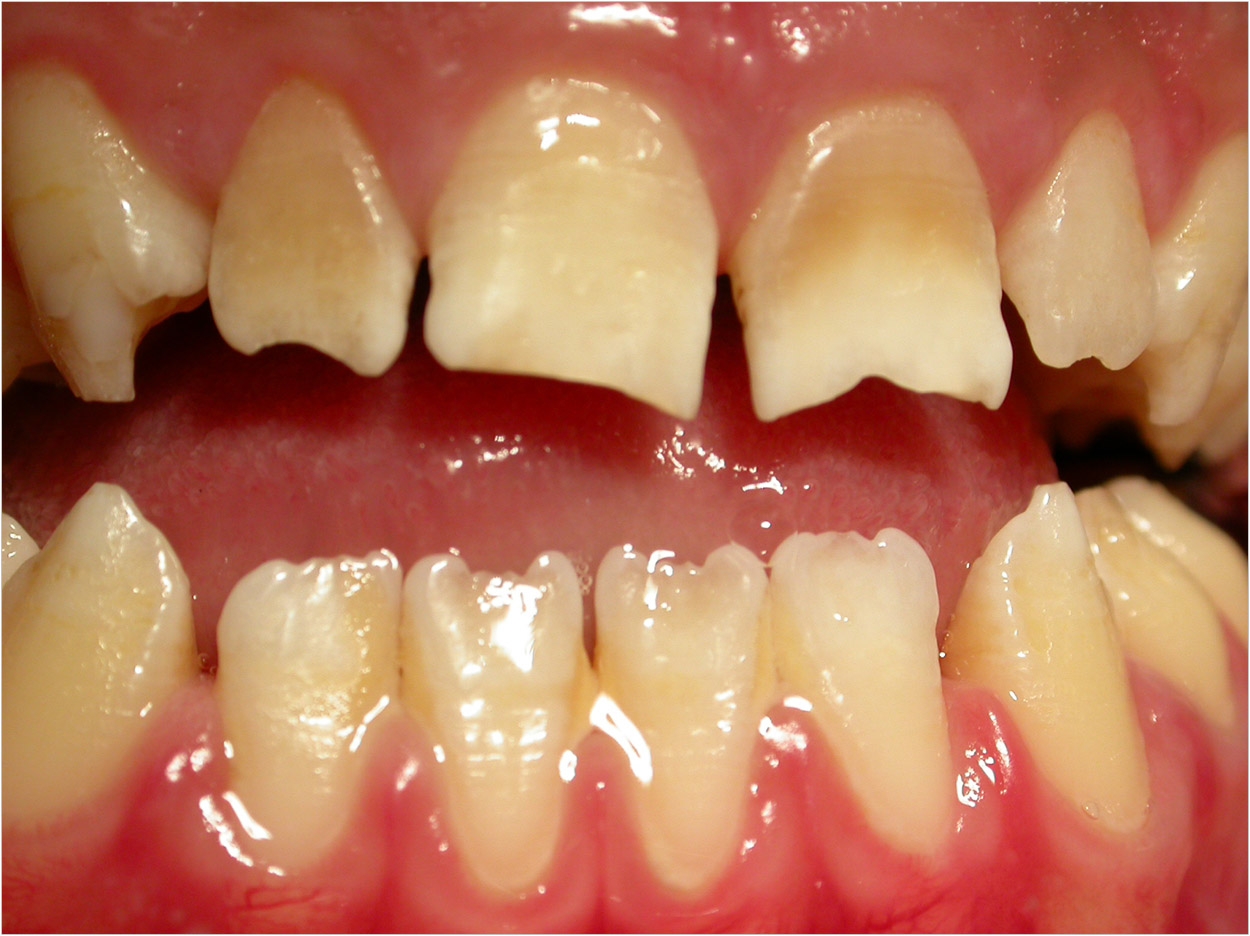
Researchers at the Texas A&M University College of Dentistry have received a five-year, $1.7 million grant from the National Institute of Dental and Craniofacial Research to determine what goes wrong at the molecular level when the gene known as dentin sialophosphoprotein (DSPP) causes dentinogenesis imperfecta (DGI).
“The enamel in some DGI teeth is totally gone at a pretty early age, the dentin underneath is exposed, and the teeth look brown,” said Yongbo Lu, MD, MS, PhD, associate professor in biomedical sciences. “All teeth can be affected, and the treatment presents a big challenge to dental practitioners. Moreover, the treatment is a severe financial burden for the family.”
DGI causes disfigured, discolored teeth that wear easily and often fall out. If left untreated, physical and emotional suffering can result. Type II DGI obliterates the dental pulp chamber, and Type III affects teeth through pulp chamber enlargement and thinner dentin. According to the researchers, DGI afflicts one out of every 6,000 to 8,000 people in the United States.
Treatment may begin with restorative and prosthodontic procedures to prevent severe tooth wear. Dental implants may be considered later if teeth are lost. However, these options may cost more than $20,000 per patient, not including subsequent maintenance and retreatment, Lu said.
To prevent these outcomes, Lu hopes to confirm that the mutated DSPP accumulates in the endoplasm reticulum, which acts as the cell’s manufacturing and packaging system, causing DGI. Second, he and his colleagues will see if small molecules can help clear the mutated protein from the endoplasm reticulum.
Specifically, the researchers will test a small molecule known as 4-phenylbutyrate (4-PBA) on mouse models that mimic human DGI tooth defects. The same molecule has been found to successfully treat children born with urea cycle disorders, among other conditions. The goal is to develop a pill that prevents the onset of DGI.
“We expect that treatment with 4-PBA would be short-term instead of lifelong,” said Lu, though predicting the optimal time for using the medication would be challenging because different teeth have different developing points.
“It takes a space of over 10 years for all of the teeth to develop. The first permanent molar, which is one of the most important for chewing, erupts around age 6. For it to have normal structure, you would have to apply the medicine, the small molecule, before its eruption,” said Chunlin Qin, DDS, MS, PhD, professor in biomedical sciences and principal investigator.
“Small molecules are one of the hot topics in medical research and treating diseases,” said Qin. “They may serve as agonists or antagonists in regulating key molecules in the pathways associated with certain diseases.”
Related Articles
Enzyme May Initiate Enamel Formation
Grant Awarded to Study Calcium Control in Dental Enamel
Without Transcription Factor Sp7, Teeth Don’t Develop












